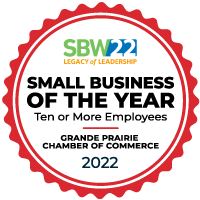Search Engine Optimization (SEO) is the process of pleasing Google (and other search engines) with website content and features so that Google shows your website higher on the page during a search instead of your competitor’s website. For your local shoe store to rank number one when someone in Grande Prairie searches “shoe stores near me,” there’s a lot of work involved to convince Google your site is what the customer (or client) is looking for.
Even though SEO may appear as though it’s super complicated and only for tech experts, the roots of SEO are not hard to understand. For part one of our search engine optimization blog series, we’re going to divide and simplify. We separate SEO into two categories: technical and content.
The Technical Side of SEO
Behind the scenes of every good website are many, many parts helping it rank higher in searches. Our team likes to call these parts “best practices,” and we stick to them with every website we build.
But how do best practices improve SEO? The answer is quite simple. Google’s highest priority is to show its users the most relevant, trustworthy, and helpful information it can. If Google didn’t, none of us would use it. So when it sees that a website has built-in features that make it more useful for visitors, Google gets happy and shows searchers the helpful website more often. Best practices are good for Google, good for visitors and great for you.
We don’t expect you to keep up with the latest best practices or master the art of coding. When it comes to implementing technical best practices into your website, our experts have you covered. Google is looking at thousands of factors, which gives us a long laundry list of things we can do to help your website do better on Google. Let’s break some of those down.
Some Technical Best Practices to Boost SEO
Mobile-friendly website design. Most of us browse websites on our phones, but did you know that Google shows you different search results on your phone than it does on your desktop computer? Google tries to save us the pain of navigating a desktop-only website with our thumbs, so having a mobile-friendly website is always a priority to keep websites showing up in all searches—desktop or not.
Secure website hosting. See that little green lock beside our website URL (web address) at the top your browser? That’s showing you that our website is secure. We securely encrypt ALL the websites we make, meaning that private information that the user sends you (through contact forms, for example) will not be spied on or seized. Google prefers secure websites over non-secure websites, and is even beginning to warn users when they visit a website isn’t secure, despite whether or not the website is actually malicious.
Structured content with headings. Google is indexing billions of website pages right now, and to be efficient, it gleams info from website headings just like we might gleam info from the headlines at a newsstand. If you only glanced at the newspaper headlines, you’d probably have a good sense of what the main articles were about: that’s because the front pages use big, descriptive headlines. When we build websites, we add descriptive headings so that Google can get a quick, accurate sense of what your website has to offer.
Descriptive file names for photos. Google doesn’t have human eyes, so when it comes to interpreting pictures, it’s mostly at a loss (however, Google’s artificial intelligence can technically see and is constantly improving—stay tuned). To help it out, we ensure pictures on our websites have descriptive file names and alt text (a fancy way to say “alternative text” with descriptive info). That way, the next time somebody searches “running shoes Grande Prairie,” Google knows it can show your picture of Nike’s. In addition, we humans are visual creatures. Knowing this, Google will favour a website with pictures and videos over a website without.
Keyword-rich information. An easy trap to fall into is describing your services in only one way. As an expert in your field, you might refer to shoes as “footwear” throughout your website, but you can bet that most people aren’t typing “footwear” in their Google search for stylish flip flops. To some extent, it’s up to you to describe your services as your customers would, but from there our team integrates helpful keywords into your content to help potential customers find you better.
The Content Side of SEO
As we’ve said before, a website is nothing without good content, and that stays true when it comes to SEO. You know how your business works, what makes it unique, and what your customers are looking for. The ability to articulate all of that in depth adds tremendous SEO value to your website.
When we say “in depth,” we mean that it’s not enough to tell your visitors that you sell shoes. In all areas, you want to be able to describe your business better than your competitors. Show pictures of your shoes, share testimonials of happy customers, list the qualities of the shoes, talk about your warranty, and educate your customers about your product and services. Any relevant information that you can provide, provide.
Content Helps Google
Many clients think their visitors don’t want too much info, but Google needs to thoroughly understand what you do to show you in search results. The more helpful your content is for humans, the more Google will favour your website. This means that filler content won’t do you any good. To improve your search engine ranking, describe your products well with text, pictures, videos and testimonials, and use the language of your customers.
Good content shows Google what your business is about and who your target audience is. If you want to show up for custom shoemaking, don’t only mention it in passing on your homepage! Dedicate a page of your website to that service and talk about how you do it, why you do it and the custom shoes you’ve done in the past.
We mentioned in the last section that people search a variety of terms to find the same thing. The more you talk about a product (and in different ways), the easier it is for Google to know to show your website to potential customers. If your website doesn’t mention sandals once, but you definitely sell sandals, you’re missing out on a key SEO search term and Google is none the wiser. The more informative and useful you can be, the higher you show in search results.
Content Helps Your Visitors
Good content isn’t just for Google—it’s for your customers. Google is the means through which we reach our customers. As you brainstorm ways to increase your Google ranking, ask yourself if your ideas are useful to your customers. Don’t try to trick the Google algorithm with a tip you found online: Google is pretty smart and will probably penalize your website rather than promote it if you’re trying to be sneaky. Ultimately, the more your website does to serve your visitors, the better it will do in searches.
The best, simplest way to boost your SEO is to focus on what you do best and learn how to describe it well. If writing content isn’t your strength, don’t get anxious! That’s what professional copywriters are for: copywriters listen to you describe your business and then articulate it clearly and effectively. Professional photographers and videographers are also here to help you reach your visitors. If you’re in need of professional content specialists like writers and photographers, we are happy to help provide these services.
The combination of technical and content SEO best practices works to increase your search ranking, but also makes your website a far more useful sales and information tool. With our team to cover the technical side and your team to provide the content, having a high-ranking website was never within closer reach.
How is your website doing on search? Contact us and we can run and SEO Baseline Report, what we like to call a “Google Report Card.”










